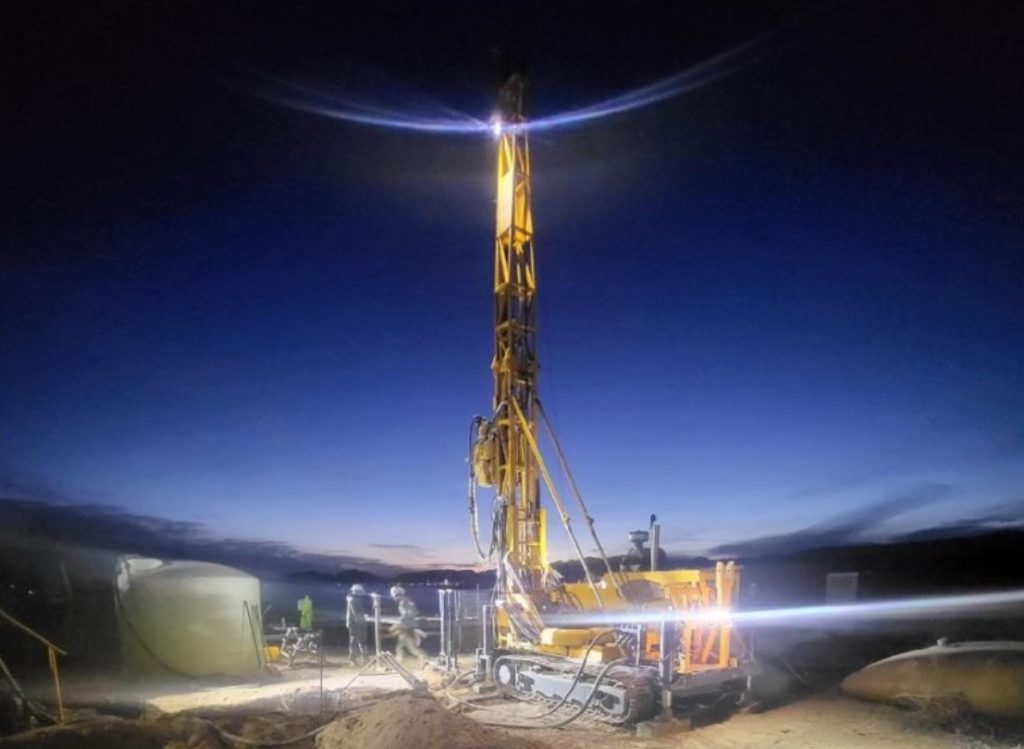Usha Resources drilling Jackpot Lake, Nevada

Usha Resources Ltd. [USHA-TSXV; USHAF-OTCQB; JO0-FSE] reported drilling has commenced for the third hole (JP23-02) at its 100%-owned Jackpot Lake lithium brine property located in Clark County, Nevada. Drill hole JP23-01 will be drilled immediately upon hole development and initial sampling of JP23-02. JP23-01 and JP23-02 are twinning JP22-01 and JP22-02, respectively, conducted to better maintain hole integrity as each hole advances to its planned 2,000 feet.
The company is also pleased to announce that it has begun preliminary work on its NI 43-101 resource estimate.
The goal of the drill program will be to build on the findings of its initial drilling which supports that Jackpot Lake is a similar geologic setting to that of Clayton Valley, hosting Albemarle’s Silver Peak Nevada lithium mine, the only producing lithium mine in North America.
Key findings of the program to date include: Soils at the project are enriched in lithium at a level comparable with Clayton Valley. Enriched lithium is present within the holes advanced, with an average of 334 parts per million and high of 820 ppm Li in 30 samples collected from shallow surface soils (less than 500 ft) within JP22-02. These results compare very favourably with the reported average of 100 ppm for the Esmeralda formation, one of the potential sources of the lithium enrichment for the brines present in Clayton Valley which hosts Albemarle’s Silver Peak lithium brine mine, the only producing lithium operation in the United States.
A geologic system is present similar to that of Clayton Valley. Significant evaporitic crystallization, indicative of a brine-forming environment, is present throughout the holes advanced, with JP22-02 containing an interval of 146 feet of massive to bedded evaporites with clay and sand interbeds and crosscutting laminations. The evaporites sit atop a large zone of higher-porosity sand and conglomerate, with at least 273 feet of a potentially pumpable aquifer present within JP22-02 into which fluids from the zones above should drain. Coarse-grained basal units are a primary focus for expansion at Albemarle’s Silver Peak lithium brine mine, the only domestic supplier of lithium within the United States, and at Pure Energy’s Clayton Valley project, where it identified a large volume of brine with superior grades.
The stratigraphy at the site supports an NI 43-101 resource. Similar stratigraphy has been encountered in JP22-02 as that in drill hole JP22-01, suggesting that the favourable stratigraphy identified in drilling is present throughout the basin as the two holes are 2.75 kilometres apart. Identifying these similarities, especially in the basal conglomerates and evaporites, is a key finding that continues to support that Dry Lake, within which Jackpot is hosted, is a similar geologic setting to that of Clayton Valley.
A primary objective will be to advance each of JP23-01 and JP23-02 to 2,000 feet, thereby potentially greatly expanding on the 99-foot and 273-foot higher-porosity zones already identified where the company believes the best potential brines are present. Pending sample results, the company would then proceed with either further drilling or completion of its maiden resource estimate, the completion of which would enable it to join the ranks of a select few companies in the United States.
“We are thrilled to return to Jackpot Lake and resume drilling,” said Deepak Varshney, CEO. “The work to date has demonstrated that Jackpot contains the right system for a major lithium discovery and by exploring to a depth of 2,000 feet, we aim to gather a more comprehensive understanding of the mineral potential within our project area, further enhancing the overall resource estimation and project feasibility of Jackpot Lake.”
Usha’s portfolio of strategic properties provides target-rich diversification and consists of Jackpot Lake, a lithium project in Nevada; White Willow, a lithium project in Ontario; and Lost Basin, a gold-copper project in Arizona.
